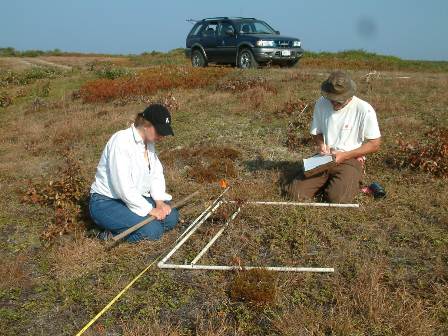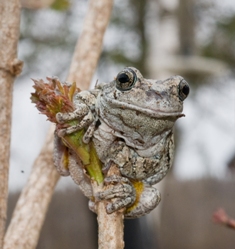 The world doesn’t operate as it used to. “Science” and “scientist” were words once exclusively reserved for academics, government agents or—going way, way back—to men and women who had the time and money to explore the grand questions of the universe.
The world doesn’t operate as it used to. “Science” and “scientist” were words once exclusively reserved for academics, government agents or—going way, way back—to men and women who had the time and money to explore the grand questions of the universe.
Today, there’s no holding back the citizen scientist! Ever wonder what kind of salamanders hide in the woods on Martha’s Vineyard? How horseshoe crabs are faring on Cape Cod? What kind of dragonflies fly along the Connecticut River? These are all questions being answered through studies currently taking place thanks to citizen scientists at Mass Audubon wildlife sanctuaries. If the question can be asked, it can be studied.
For example, consider the recently completed Breeding Bird Atlas 2 project. For the past five years, Mass Audubon called on volunteers across the state to systematically inventory their areas to determine the current snapshot of birdlife in the state in the largest citizen science project ever conducted in Massachusetts history. This was also done in the 1970s (the results are now being compared) and it will be done again 20 years from now. Mass Audubon has also conducted statewide butterfly and herpetological (reptiles and amphibians) atlases.
Ready to Get Started?
All around Massachusetts, natural phenomena is just waiting to be studied. Projects can be casual observation studies like our annual Focus on Feeders, which takes place in February, or more interactive, where you’re out in the field. Here are a few ideas, in addition to the ones mentioned above:
* Inventory Monitoring Projects. Sometimes we need to step back and take a look at the entire picture to understand its parts. The Inventory Monitoring Project seeks volunteers help to survey birds, reptiles, amphibians, plants and more across the state including a special opportunistic study on amphibian sounds heard on our sanctuaries. Birding at Pleasant Valley in the Berkshires when a Gray Treefrog suddenly trills? We want to know about it!
* Birds to Watch. Through studies like the Breeding Bird Atlases 1 and 2, the State of the Birds report, and the myriad smaller projects conducted throughout the sanctuary system, Mass Audubon has identified several birds in need of greater scrutiny, such as the American Kestrel and the Cliff Swallow. Our focused Birds to Watch projects will hopefully lead to conservation actions that may help these birds thrive in Massachusetts into the future.
* Owl Reporter. Owls are among the most difficult birds to study in Massachusetts. Let’s start with where they are. Submit your sightings so we can build our base of information.
* Got Hummingbirds? See Owl Reporter above, insert hummingbirds!
* Your local sanctuary’s projects. Chances are that the staff at your local sanctuary is already running a citizen science program, and could use your help. Jump into the existing pool, or create your own splash by bringing your research idea to the sanctuary. Find your sanctuary, and follow your passion!
Gray Treefrog image via Joy Marzolf


